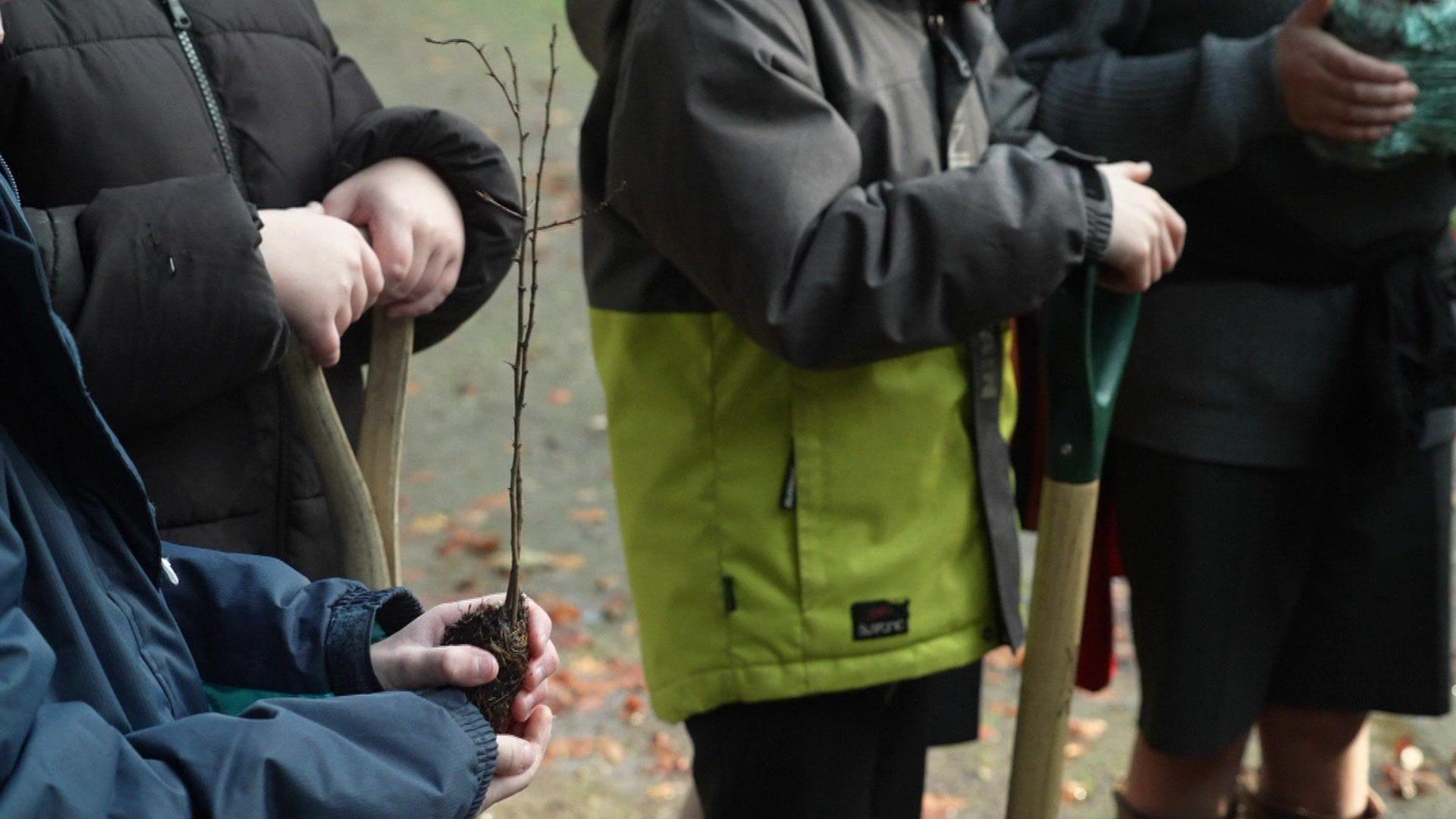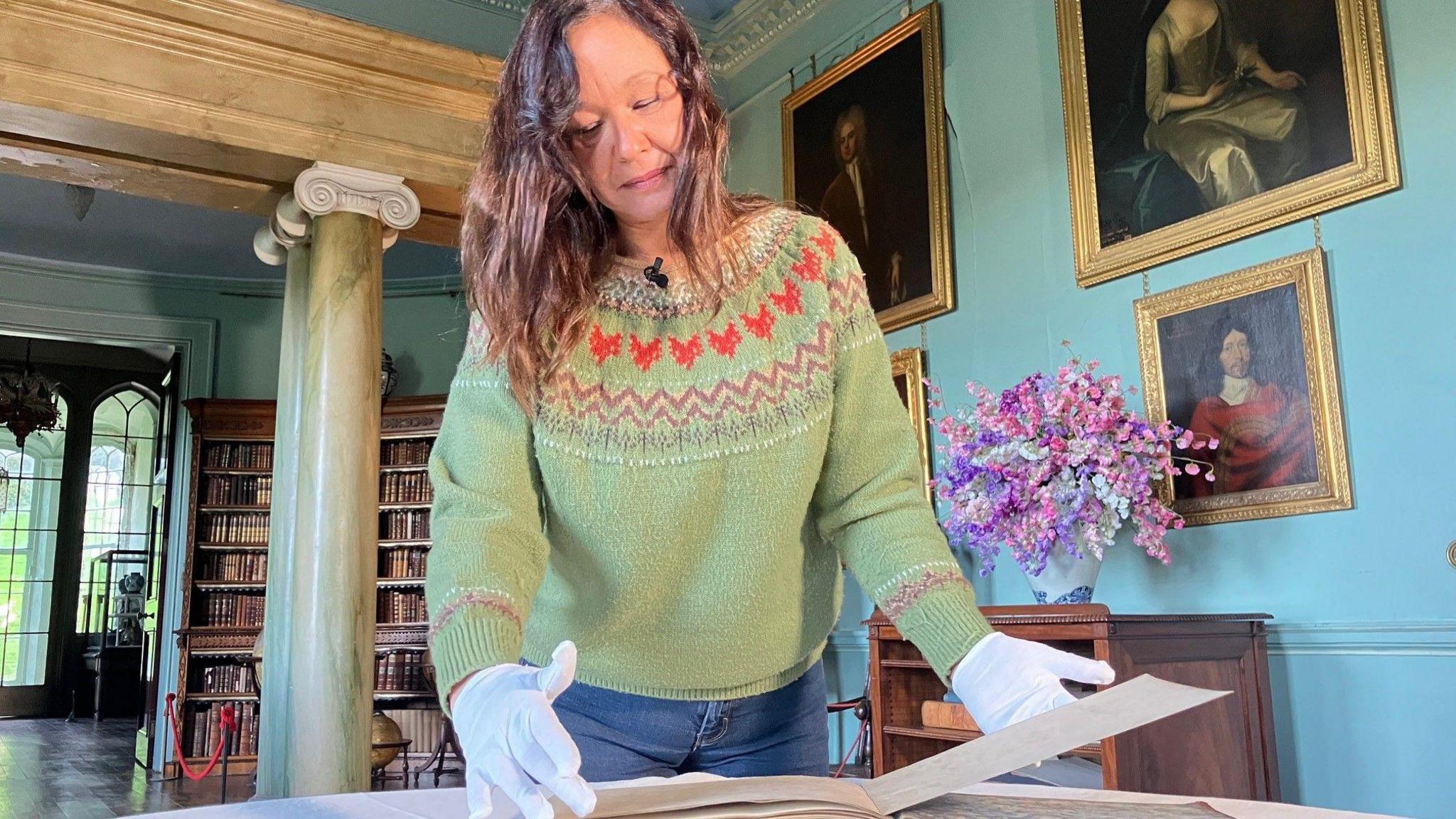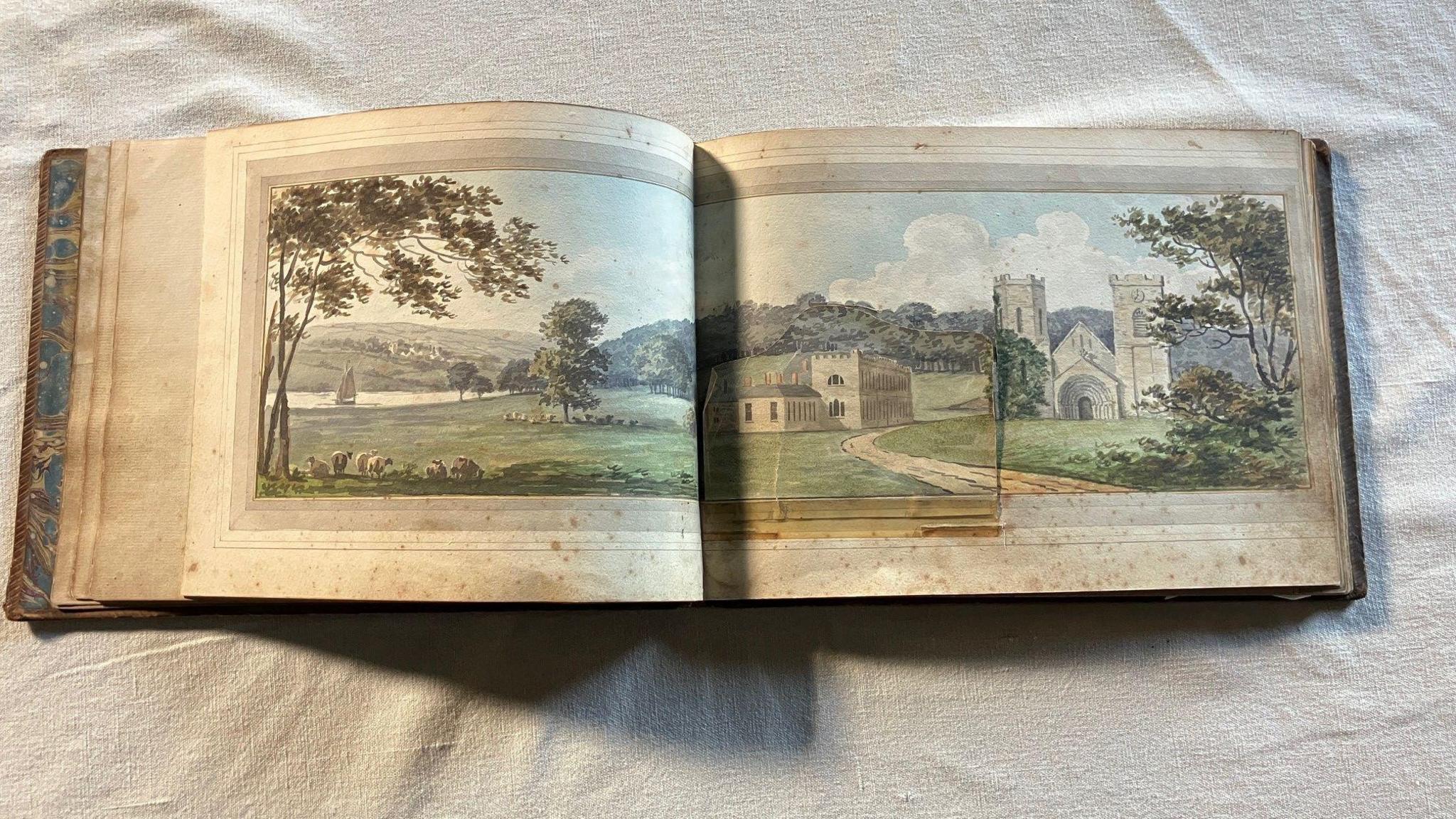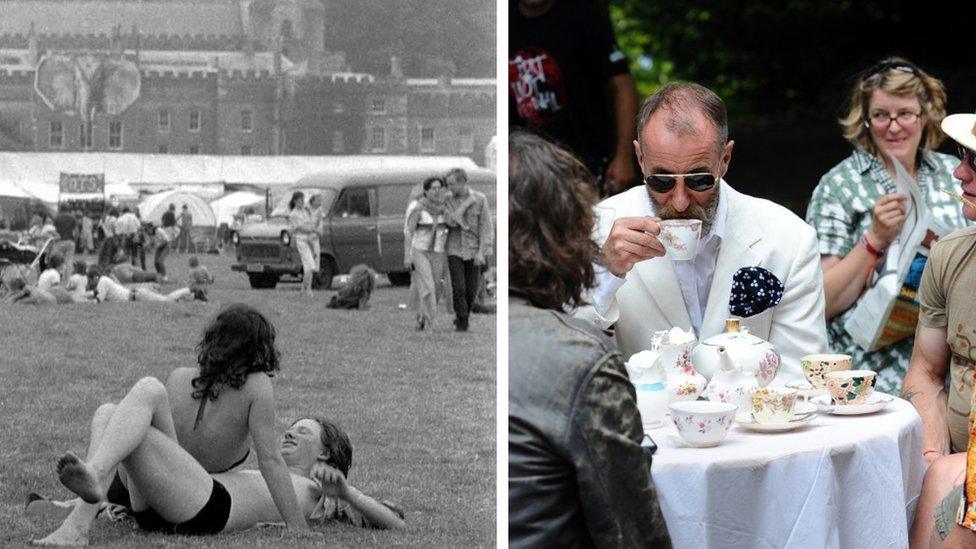Pupils use 1792 plans to plant trees on estate

Sixty pupils from St Germans Primary School planted a hazel sapling each on the Port Eliot estate
- Published
Primary school children have planted saplings on a Cornwal estate using plans from 1792.
Humphry Repton landscaped the 60-acre (24 ha) estate in 1792 and recorded his designs in a leather-bound sketchbook called the Red Book.
Sixty pupils from St Germans Primary School have planted hazel saplings according to Repton's plan after the original trees were damaged by storms.
One of the pupils said: "I'm really excited because I've never planted a tree before, or a plant."

Coco Brown said Humphry Repton's Red Book was consulted whenever additions to the estate were being considered
Coco Brown, who researches the history of Port Eliot, said: "There are 60 acres covered with a variety of trees and if there are to be additions, the Red Book is consulted."
Humphry Repton's Red Book contains all the famous landscaper's hand-drawn sketches of his designs for the park.
The features he designed include a rhododendron garden, maze, bowling green, orangery and arboretum.

Humphry Repton's Red Book contains hand-drawn sketches of his designs for the park
Ms Brown said there were 420 trees across the grounds, all of which were indigenous to Britain, and consisted of hazel, silver birch, English oak, rowan, blackthorn and hawthorn.
She said: "We are going to be planting some hazels along the River Tiddy and these will be replacing some of the original trees that have been lost to either storms or wind damage."
Assistant head teacher Sarah Smith said the tree planting brought "real-life context into the classroom".
"Every aspect we can, we're outside for enrichment opportunities - the children just love it," she added.
Follow BBC Cornwall on X, external, Facebook, external and Instagram, external. Send your story ideas to spotlight@bbc.co.uk, external.
Related topics
- Published25 July 2019
